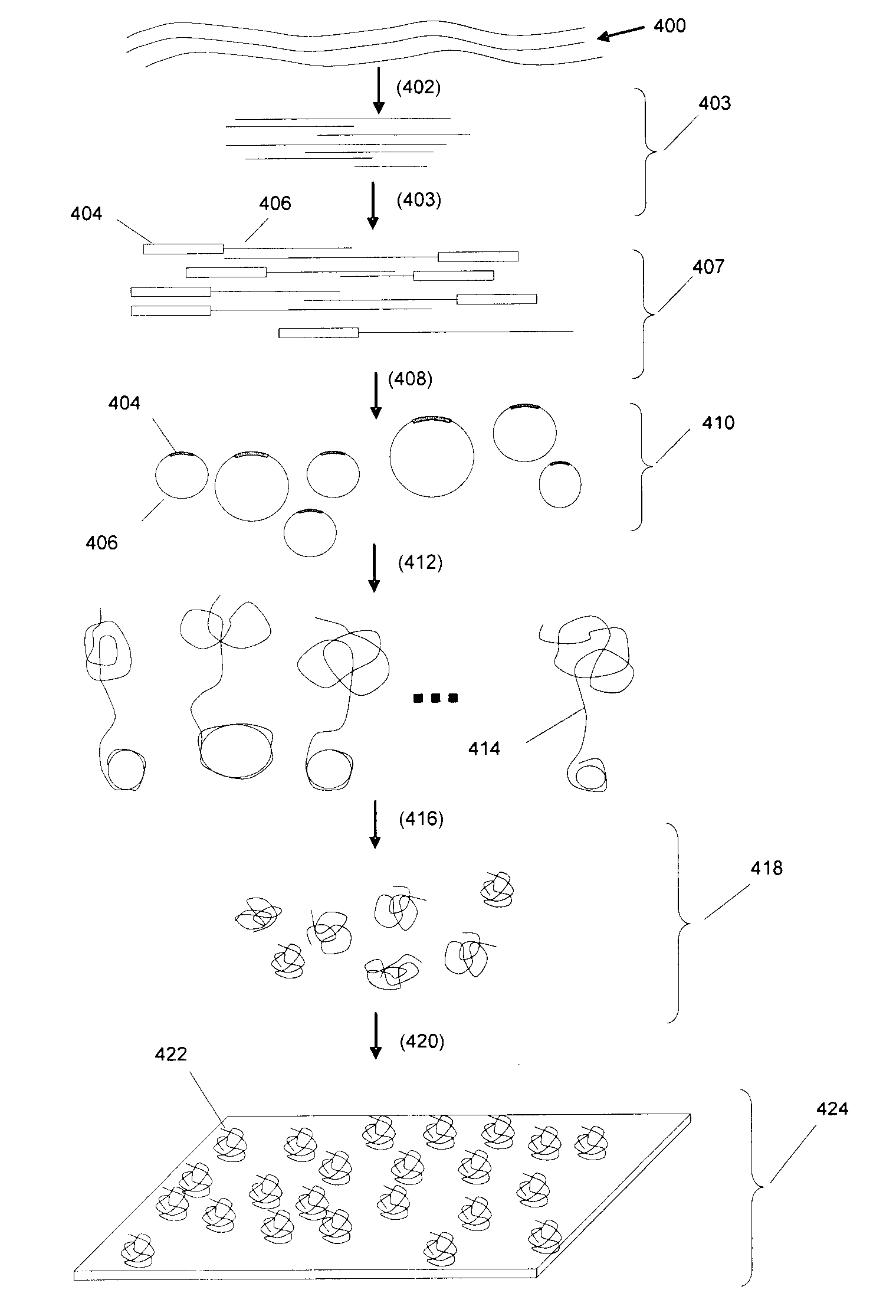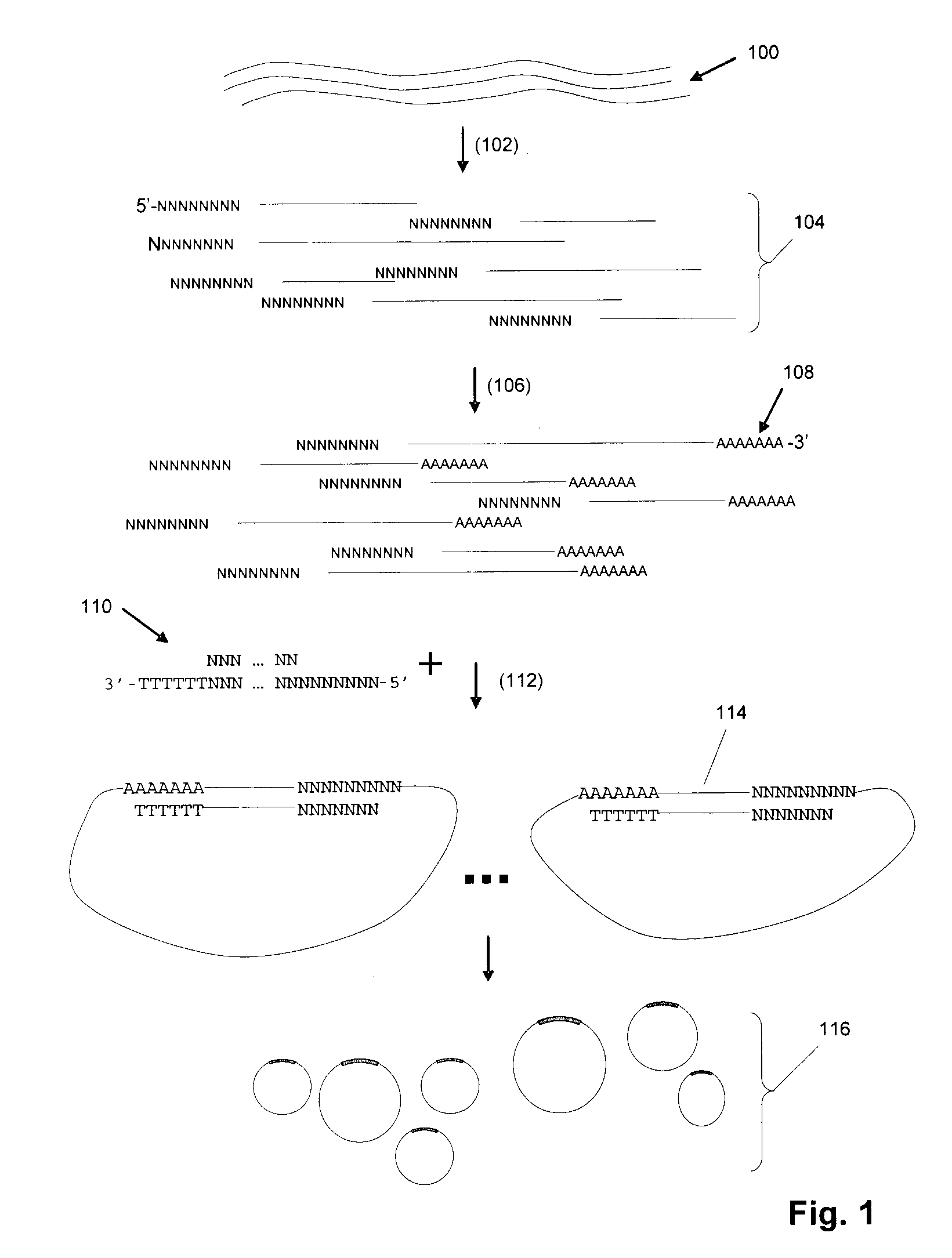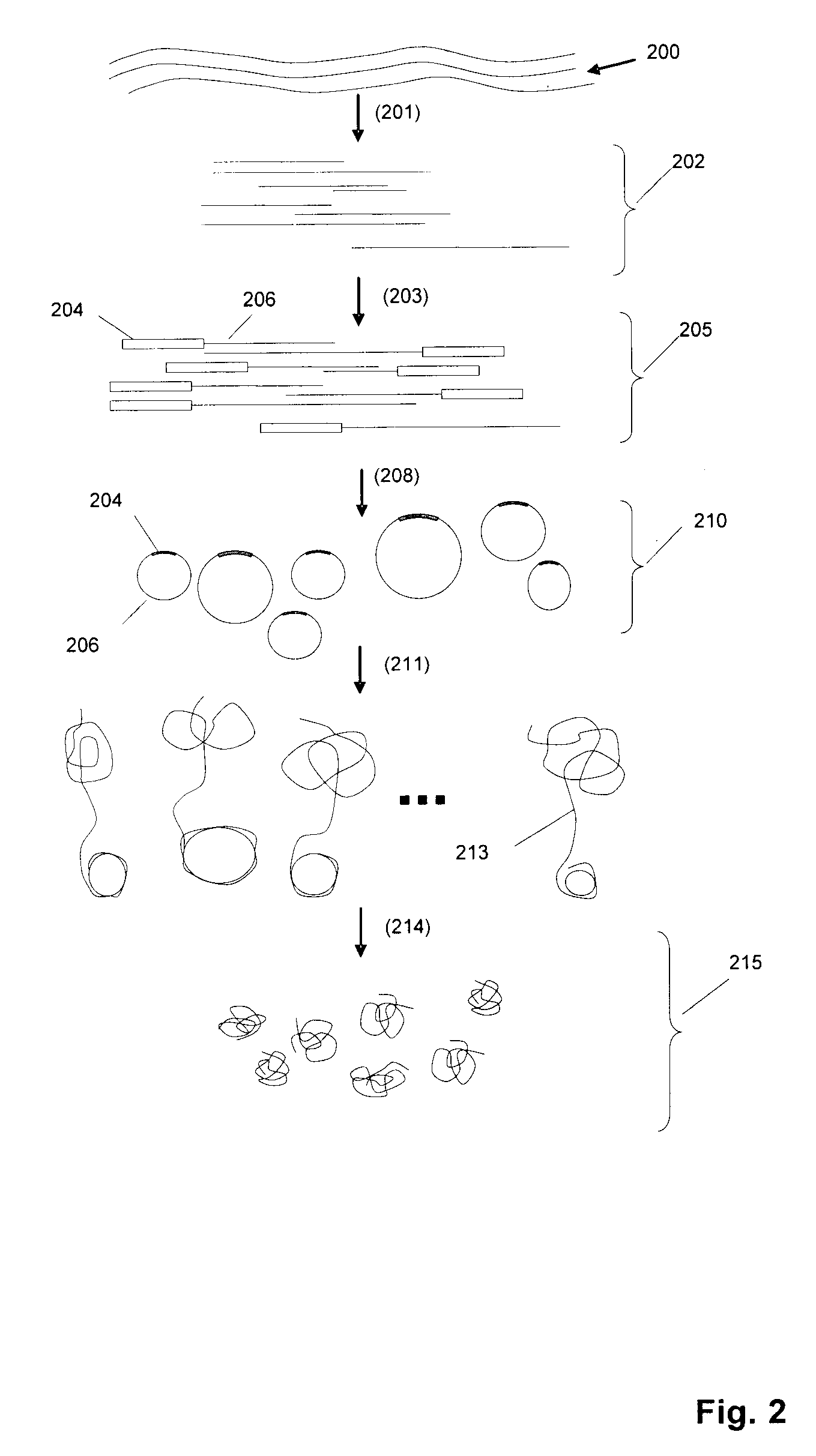Efficient arrays of amplified polynucleotides
an amplified polynucleotide and array technology, applied in the field of efficient arrays of amplified polynucleotides, can solve the problems of limiting the overall sequencing efficiency, arrays with a high density of single molecules often suffer from a poor signal-to-noise ratio, and most traditional sequencing techniques are not effective in the analysis of arrays of single molecules
- Summary
- Abstract
- Description
- Claims
- Application Information
AI Technical Summary
Benefits of technology
Problems solved by technology
Method used
Image
Examples
example 1
Circularization Using Adaptor Segments
[0255]In one exemplary protocol, a target sequence is a synthetic oligo T1N (sequence: 5′-NNNNNNNNGCATANCACGANGTCATNATCGTNCAAACGTCAGTCCANGAATCN AGATCCACTTAGANTGNCGNNNNNNNN-3′) (SEQ ID NO:1). The target sequence includes an adaptor which actually comprises 2 separate oligonucleotides, or adaptor “segments”. The adaptor segment that joins to the 5′ end of T1N is BR2-ad (sequence: 5′-TATCATCTGGATGTTAGGAAGACAAAAGGAAGCTGAGGACATTAACGGAC-3′) (SEQ ID NO: 2) and the adaptor segment that joins to the 3′ end of T1N is UR3-ext (sequence: 5′-ACCTTCAGACCAGAT-3′) (SEQ ID NO: 3). In this aspect, UR3-ext contains a type IIs restriction enzyme site (Acu I: CTTCAG).
[0256]As a first step, BR2-ad is annealed to BR2-temp (sequence 5′-NNNNNNNGTCCGTTAATGTCCTCAG-3′) (SEQ ID NO: 4) to form a double-stranded adaptor BR2 adaptor. UR3-ext is annealed to biotinylated UR3-temp (sequence 5′-[BIOTIN]ATCTGGTCTGAAGGTNNNNNNN-3′) (SEQ ID NO: 5) to form a double-stranded adaptor UR3...
example 2
RCR Reaction
[0257]An exemplary RCR reaction protocol is as follows: In a 50 μL reaction mixture, the following ingredients are assembled: 2-50 pmol circular DNA, 0.5 units / μL phage φ29 DNA polymerase, 0.2 μg / μL BSA, 3 mM dNTP, 1×φ29 DNA polymerase reaction buffer (Amersham). The RCR reaction is carried out at 30° C. for 12 hours. In some embodiments, the concentration of circular DNA in the polymerase reaction may be selected to be low (approximately 10-100 billion circles per ml, or 10-100 circles per picoliter) to avoid entanglement and other intermolecular interactions.
example 3
Preparation of Surface for Constructing Random Arrays
[0258]A random array can be constructed on a glass surface. For example, a suitable glass surface may be constructed from microscope cover slips. In one exemplary protocol, microscope cover slips (22 mm sq˜170 μm thick) are placed in Teflon racks. They are soaked in 3 molar KOH in 95% ethanol / water for 2 minutes. They are then rinsed in water, followed by an acetone rinse. This removes surface contamination and prepares the glass for silanization. Plasma cleaning is an alternative to KOH cleaning. Fused silica or quartz may also be substituted for glass. The clean, dry cover slips are immersed in 0.3% 3-aminopropyldimethylethoxysilane, 0.3% water, in acetone. They are left to react for 45 minutes. They are then rinsed in acetone and cured at 100° C. for 1 hour. 3-aminopropyldimethylethoxysilane may be used as a replacement for 3-aminopropyltriethoxysilane because it forms a mono-layer on the glass surface. The monolayer surface pr...
PUM
| Property | Measurement | Unit |
|---|---|---|
| Area | aaaaa | aaaaa |
| Area | aaaaa | aaaaa |
| Strength | aaaaa | aaaaa |
Abstract
Description
Claims
Application Information
 Login to View More
Login to View More - R&D
- Intellectual Property
- Life Sciences
- Materials
- Tech Scout
- Unparalleled Data Quality
- Higher Quality Content
- 60% Fewer Hallucinations
Browse by: Latest US Patents, China's latest patents, Technical Efficacy Thesaurus, Application Domain, Technology Topic, Popular Technical Reports.
© 2025 PatSnap. All rights reserved.Legal|Privacy policy|Modern Slavery Act Transparency Statement|Sitemap|About US| Contact US: help@patsnap.com



